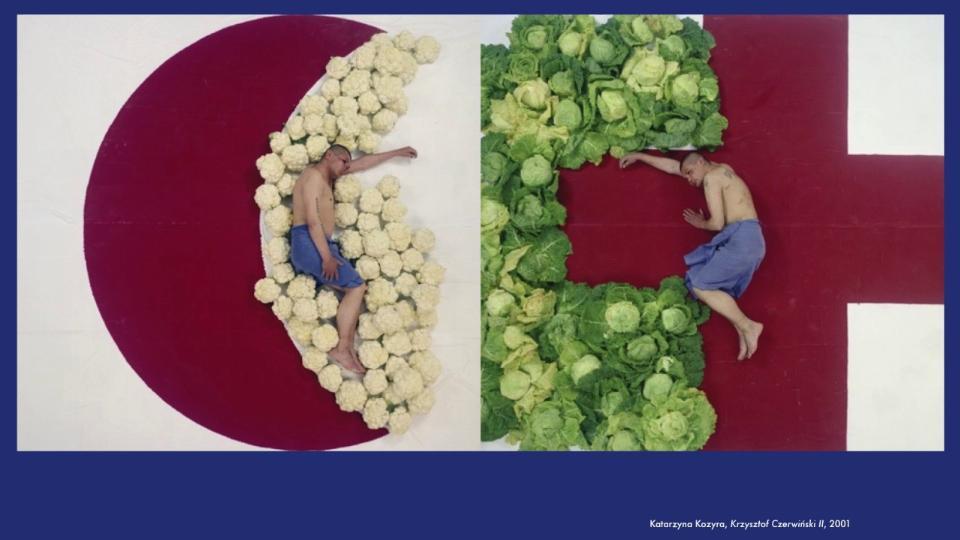It’s getting better and even better? the presentation of Kolekcja II
The title of the exhibition has been borrowed from one of the works in the Arsenal Gallery’s collection, namely a neon by Ryszard Grzyb (It’s getting better and even better). The optimistic slogan provides a reference point for the artists’ reflections. All the presented works, whose authors come mainly from Poland, but also from eastern and southern Europe, have been produced in the 21st century, when Poland had already passed through the most difficult period of political transformation. At that time, the social climate seemed filled with a hope for these countries’ fast modernisation and their turning towards the West. Yet, in their discourses, the artists recalled painful events from the past, highlighted the importance of symbolic conflicts, which in contemporary society are often unduly ignored, and in effect, produced pessimistic visions of the future.
Works from Arsenal Gallery’s Kolekcja II are often iconic, ones which in the current tense and uncertain times have acquired a new significance. Cases in point are Anna Baumgart’s sculpture Woman in a Mask, which presents a victim of the terrorist attack in the London metro in 2005, or the photographs by Katarzyna Kozyra (Krzysztof Czerwiński II), whose contents conveys questions as to the role of mercy in the face of conflicts that have religious or cultural tensions as their background.
Most of the future-themed works in Arsenal Gallery’s collectionare dystopias. Kuba Bąkowski’s sculptural installation A Boy and His Dog or the photographs taken by Piotr Wyrzykowski in the Kyiv metro (Manhunt) are sci-fi visions; yet they also contain a load of menacing realism. Other works, such as the video Energy Lithuania by the Lithuanian artist Deimantas Narkevičius, refer to the failure of modernising projects that once caused so much hope.
The image of the exhibition is made complete by auto-thematic works, which point to a history in which art fell victim to various political systems. Julita Wójcik’s witty She-Modernist may be interpreted as a bitter reflection on the utopian and, in essence, naive manner in which artists construe the future. Other works, although referring to concrete events, carry more universal messages. Hubert Czerepok’s video Lux Aeterna is filled with aesthetic and symbolic references. While it tells about the tragic events on the island of Utøya, it is at the same time a reflection on the subject of art which from such categories as the sublime may easily slide towards the insanity of self-absolutisation.
The exhibition Is it getting better and even better? to a great extent constitutes a reaction to the atmosphere of the last few months, in Poland as much as elsewhere in the world. It brings to attention how very pertinent, and sometimes even prophetic are the contributions of artists, since they often react to events in social life in a way that goes against the dominant narrations or focus on problems attendant on the matter of symbols in public space or on the more or less distant past. Neither does the exhibition overlook the crucial function of artists’ statements and of systematically expanded collections of contemporary art.
Maria Rubersz
translated form Polish by Klaudyna Michałowicz
Curator: Maria RuberszVahram Aghasyan, Anna Baumgart, Kuba Bąkowski, Rafał Bujnowski, Hubert Czerepok, Łukasz Gronowski, Ryszard Grzyb, Elżbieta Jabłońska, Zhanna Kadyrova, Katarzyna Kozyra, Zbigniew Libera, Deimantas Narkevicius, Aleksandra Polisiewicz, Slavs and Tatars, Marek Sobczyk, Slaven Tolj, Julita Wójcik, Piotr Wyrzykowski

PLAN YOUR VISIT
Opening times:
Thuesday – Sunday
10:00-18:00
Last admission
to exhibition is at:
17.30
